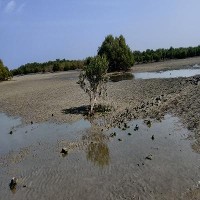CO-MICC
Climate Change risk management is the process of designing policies and projects to manage the changes and risk associated with climate change, i.e to mitigate the impact of risk and changes on people and infrastructure resulting from climate change. Understanding what changes are expected is critical to being able to conduct robust climate change management.
State of the art multi-model ensembles (MME) of future freshwater-related hazards of climate change (CC) are the best source of information for informing Climate Change risk management. However how to use multi-model ensembles and their outputs to inform Climate Change Risk Management, is unclear.
Such ensembles have been generated in the framework of the Inter-Sectoral Impact Model Intercomparison Project (ISIMIP) initiative, however little work has been done on how to use the outputs of such ensembles to inform climate change risk management.
The COMICC project will establish how the outputs of multi-model ensembles can be used to inform climate change risk management and adaptation assessments, specifically in the area of freshwater risk.. The project will be carried out by jointly by data providers (scientists) and users (policy and decision makers) to ensure the availability and applicability of salient and credible information for different types of end-users. A key focus will be on how to address and manage uncertainties. Freshwater hazards include decreasing surface and groundwater resources, drought and floods.
Goals
The project's mains goals are:
- to co-develop, together with stakeholders, methods for providing and utilizing MME data on freshwater-related hazards for risk and adaptation assessments at various spatial scales, and
- to provide these data at a web portal in a suitable way, in order to increase availability and applicability of information for different types of end-users, with a focus on how to address uncertainties.
Approach
Co-development of PUNI (Providing and Utilizing eNsemble Information) methods will be done jointly by global hydrological modelers, scientists investigating co-development methods and societal information needs, boundary organizations and stakeholders (end-users). They will all participate in three stakeholder dialogues at the global scale (end-user industries), transboundary scale (Morocco, Algeria, Tunisia), and river basin scale (Ebro). PUNI methods will be co-developed by testing alternative ways of presenting MME data in support of exemplary CC risk assessments in each stakeholder dialogue in an iterative manner, based on MME data that are either available or generated specifically in the project in response to end-user input.
Results
Expected results include a handbook on PUNI methods and a web portal at UNESCO’s International Centre for Water Resources and Global Change where end-users from around the world will be able to access hydrological MME data for their region of interest for free and in a way that suits their needs, e.g. by selecting a hazard indicator for low flows as well as its spatial and temporal aggregation.
Which regions are addressed within CO-MICC?
- From local to global: CO-MICC delivers data on a spatial scale of 0.5° and analyzes basins larger than 20000 km²
- Local scale: The Ebro catchment in Spain
- Regional (transboundary) scale: the MAT region (Morocco, Algeria, Tunesia) with a focus on the following basins: Moulouya (Morocco-Algeria), Chelif (Algeria), Medjerda (Algeria-Tunisia)
- Global scale
Which kind of data will be addressed?
Only model data from ensemble simulations of large-scale hydrological models, compatible with the ISIMIP protocol (https://www.isimip.org/).
Project Participants
Johann Wolfgang Goethe-Universität Frankfurt (GU)
Petra Döll (leading PI)
Fabian Kneier (project coordinator)
Laura Woltersdorf
Thedini Asali Peiris
International Centre for Water Resources and Global Change (ICWRGC)
Sigfried Demuth (PI)
Stephan Dietrich
Carina Zang
International Institute for Applied Systems Analysis (IIASA)
Yoshihide Wada (PI)
Yusuke Satoh
Kisters AG (KAG)
Enrique Cano Scheurich
Dirk Schwanenberg (PI)
Le Mans Université (UM)
Yamna Djellouli
National Center for Scientific Research (CNRS)
Jan Polcher
Potsdam Institute for Climate Impact Research (PIK) e. V.
Dieter Gerten (PI)
Lauren Seaby

Timeframe
October 2017 - February 2021
Funding
Funded by: Austrian Research Promotion Agency (FFG)
More infomration


